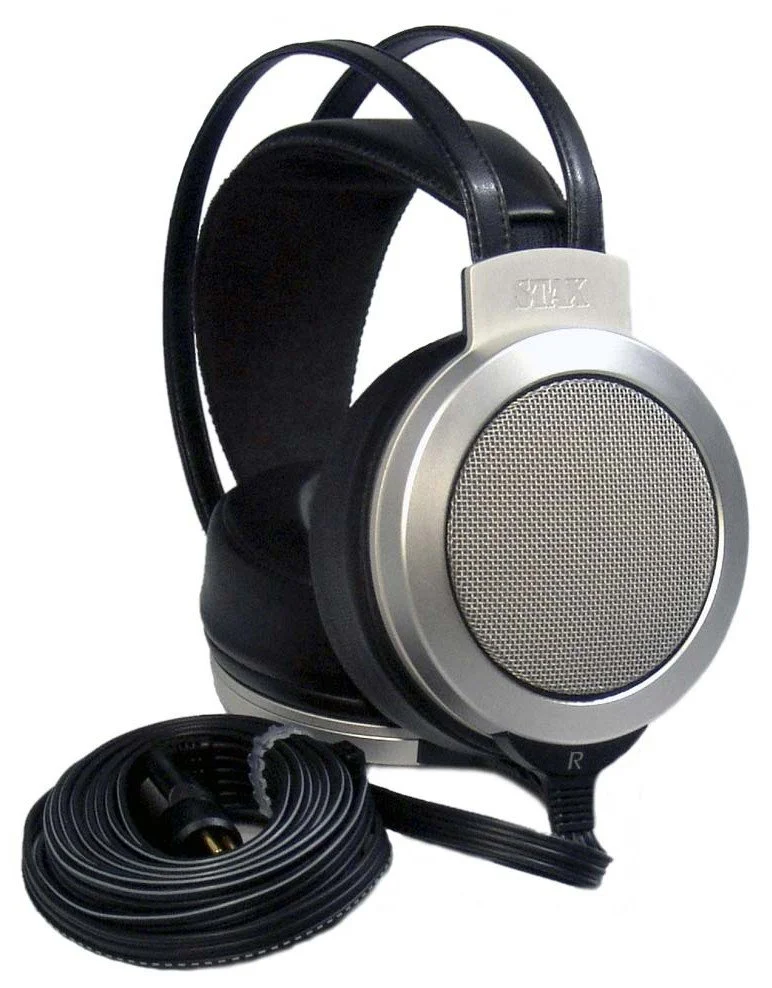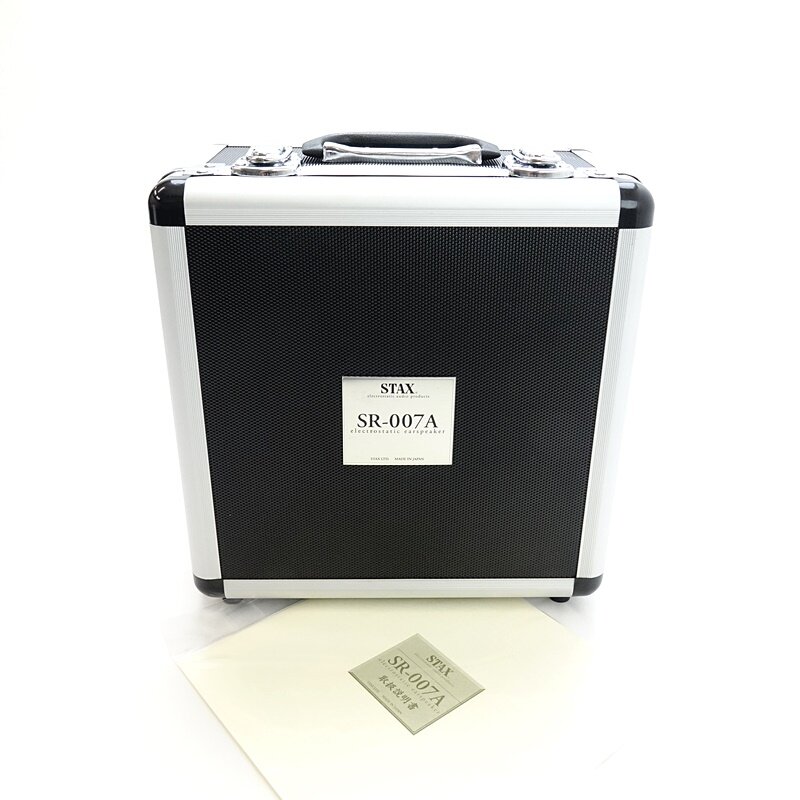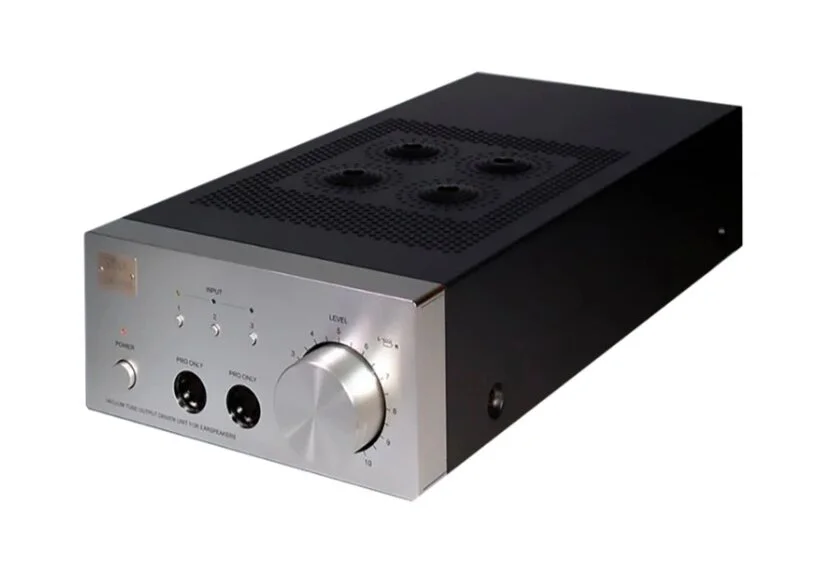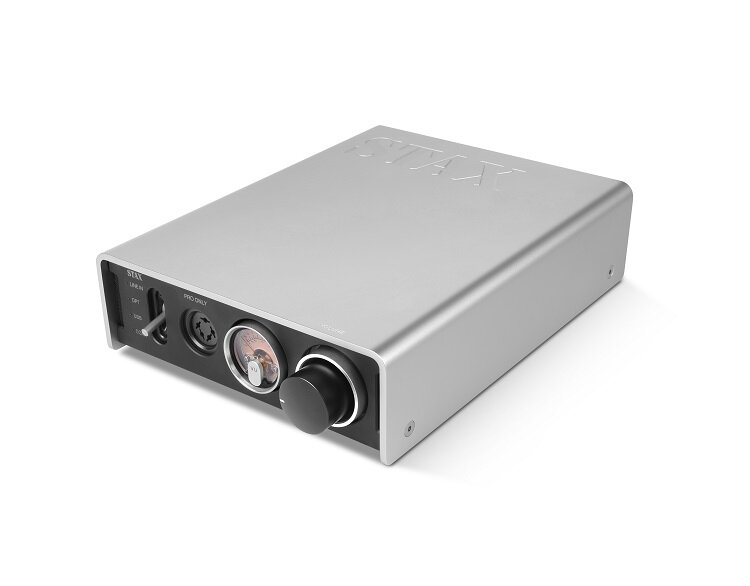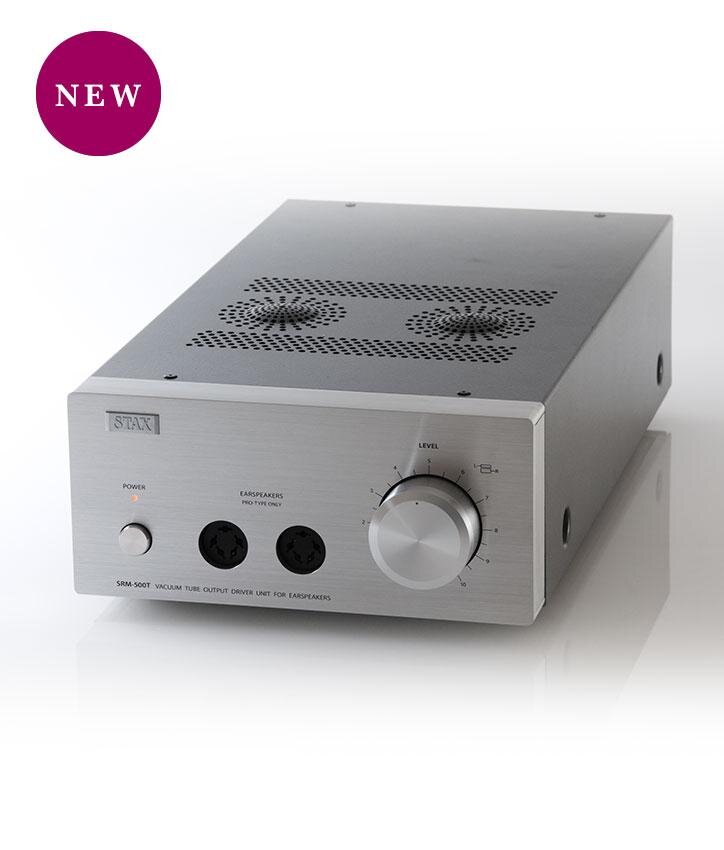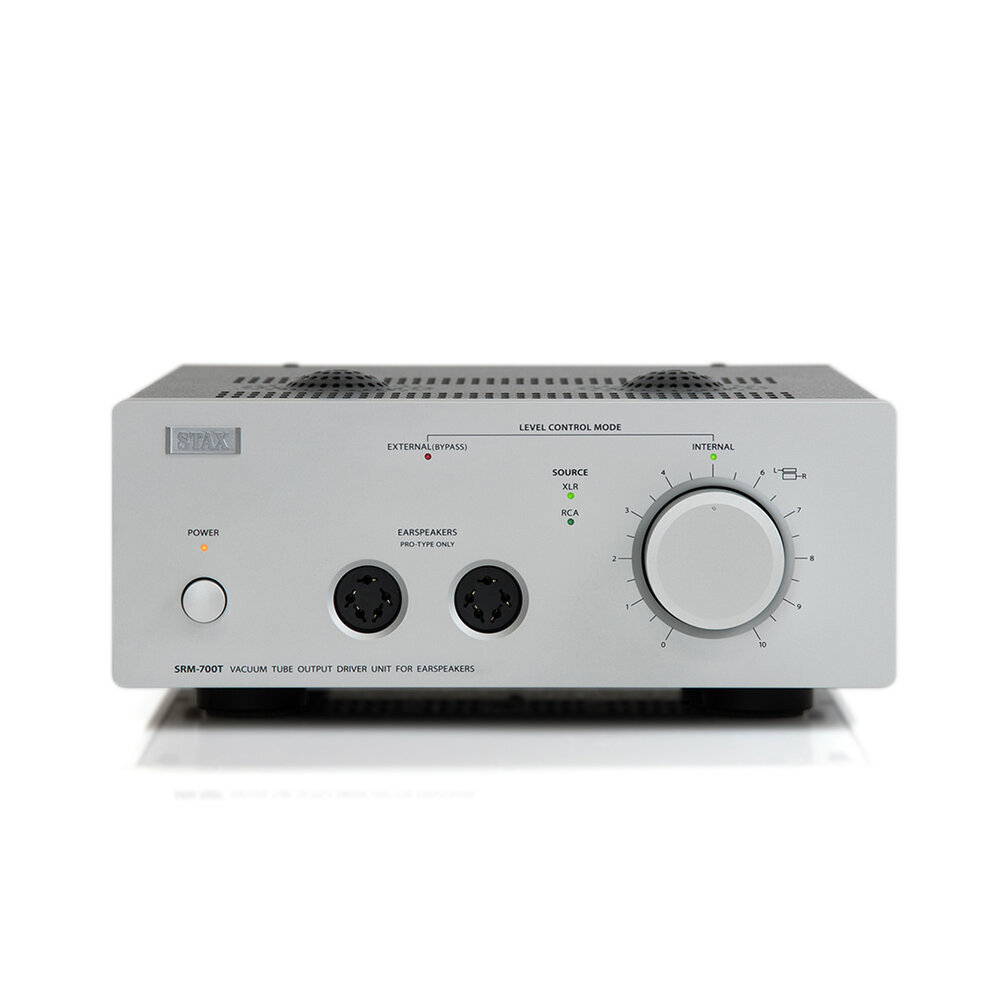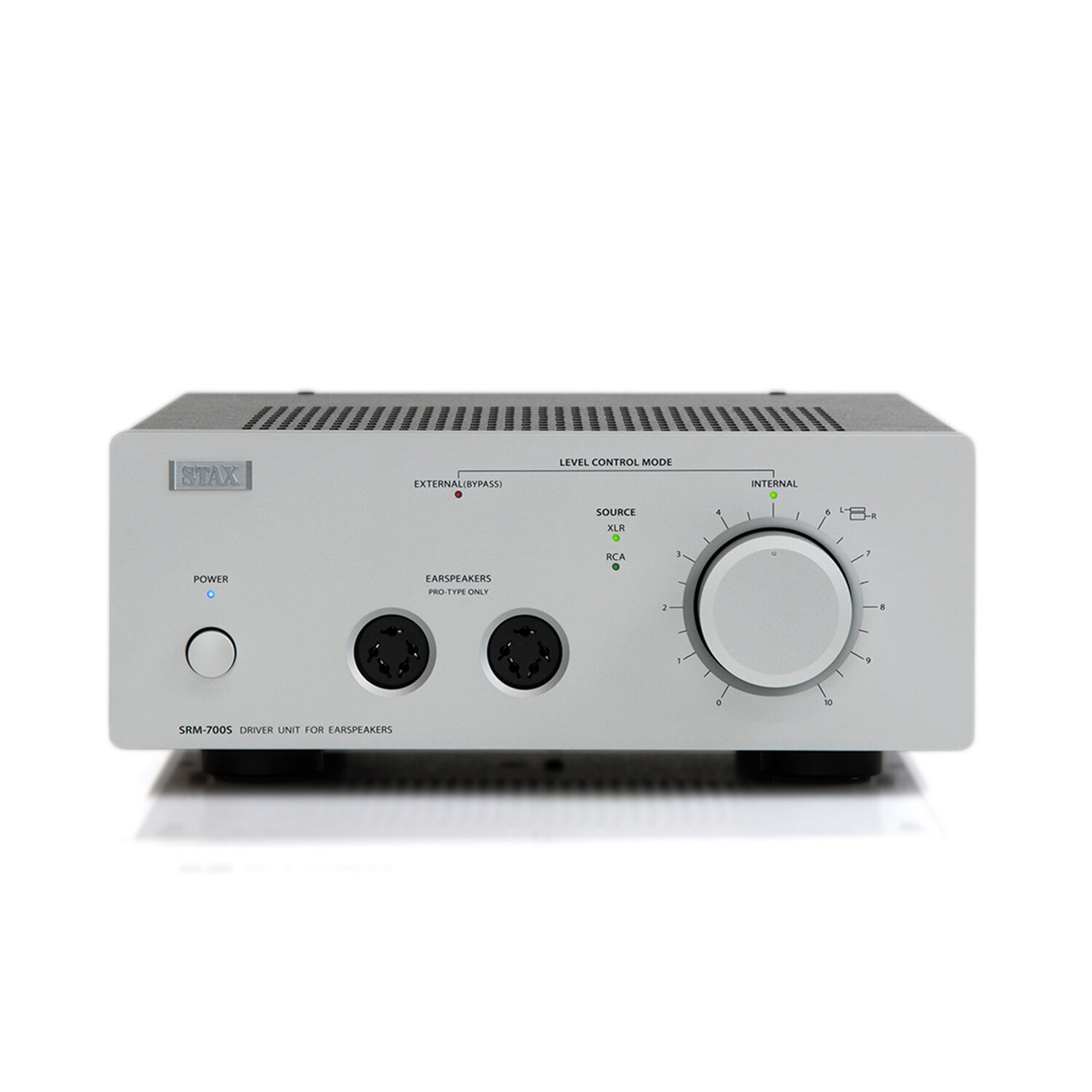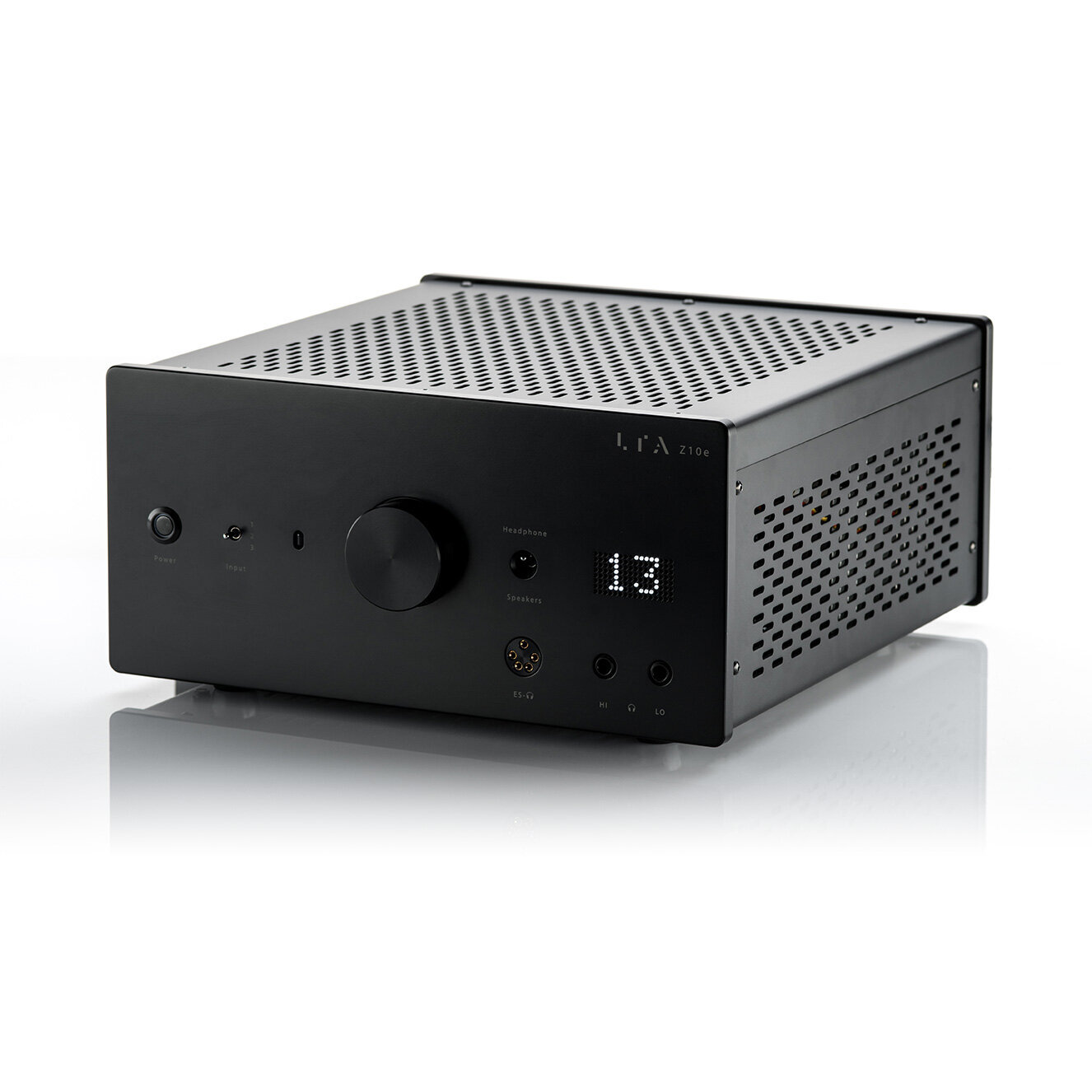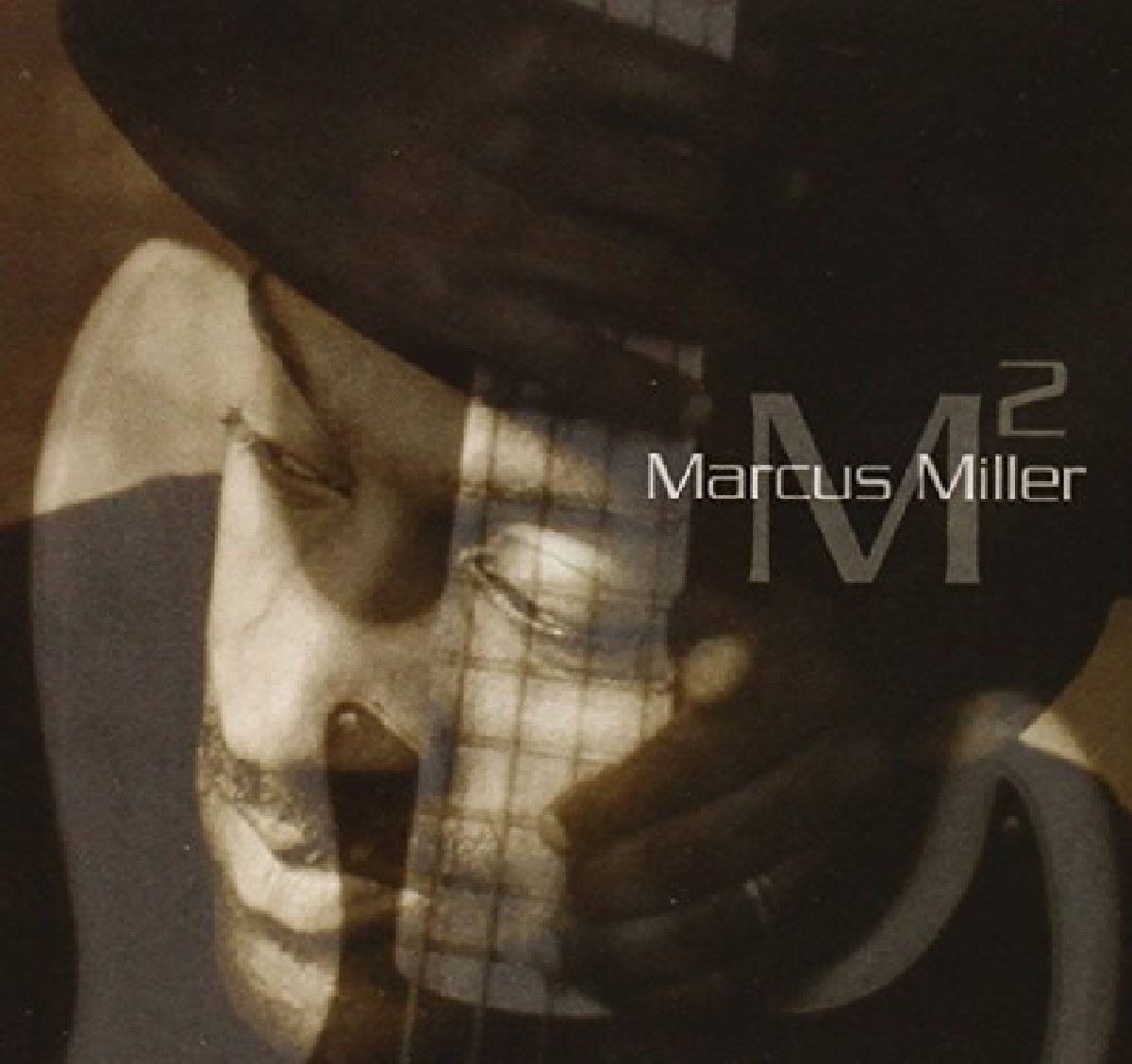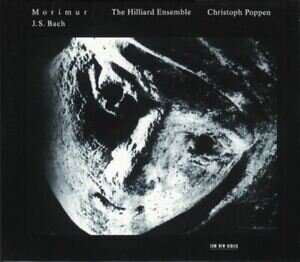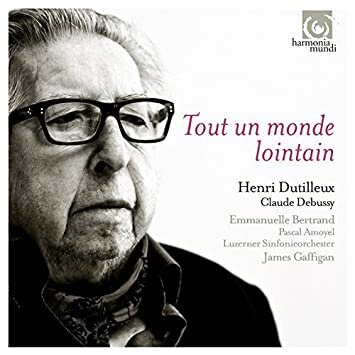THE STAX SR-007A - REVIEW
Blissful Transparency, Clarity, and Sublime Musicality!
Much of what follows in the introduction, immediately below, is a repeat of that which appeared in the STAX SR-L700MkII review with regard to the STAX company. However, I should have issued a warning in the STAX SR-L700MkII earspeaker review. And that warning is this—electrostatic earspeakers (as STAX refers to its electrostatic headphones) are addictive in the extreme! And to go down the road of electrostatic earspeaker auditioning/listening is a road from which you may never return. There, I’ve done my public service duty.
The company, STAX, began operations in 1938. Then its primary products were condenser microphones, tone arms, phono cartridges, and electrostatic tweeters for traditional loudspeakers.
In 1960 STAX sold its first electrostatic earspeaker (headphone)—the SR-1. That same year STAX also developed and produced its first energizers (amplifiers)—the SRA-4S and the SRA-6S—designed specifically to drive its earspeakers, as electrostatic earspeakers cannot be driven by traditional headphone or integrated amps.
Over the intervening years STAX would develop and produce a range of earspeakers, energizers, and full-range electrostatic loudspeakers as well. In time, the STAX name would become synonymous for electrostatic earspeakers/headphones worldwide.
In 1976 STAX brought to market the SR-Sigma earspeaker, which it deemed its “Semi-panoramic sound type Earspeakers.” And in 1979 STAX introduced the SR-Lamba. These earspeaker would be the early forerunners for the STAX SR-L700MkIl ($1649-its above entry-level earspeaker).
“STAX chose the electrostatic technology for its ability to produce transparent sound, and low weight for comfort/ergonomics, both due to the driver design not employing fixed magnets and moving coils, as opposed to other common headphone driver designs. The minimal weight of the driver ensures a very quick response to the signal, creating a more faithful sound reproduction.”
(Images courtesy of SuperBest Audio friends and inexxon)
At present, STAX produces several electrostatic earspeakers—the SR-003MkII ($350-its in-ear-earspeaker ), SR-L300 ($455-its entry-level earspeaker), SR-L500 ($830), SR-L700MkII ($1649), SR-007MK2 ($2205), the SR-009S ($4545-its flagship earspeaker), and the subject of this review the STAX SR-007A ($2205).
REFRAIN: Unlike most reviews, this review will be non-sequential, as it will start with how the headphones actually sound and not the process of physically “undressing” them and/or laying out their various parts, specifications, etc. Think of this review then, as a non-linear movie—Memento, Kill Bill, Pulp Fiction, etc—that, likewise, starts at the end and winds its way to the beginning.
The Sound
The music that the STAX SR-007A renders is a beautiful and transportive experience. It is the marriage of unparalleled transparency (a trait common to its electrostatic kith and kin) and a truly sublime musicality. When I drafted our motto—transparency, musicality, engagement, and naturalness—I had not then listened to an electrostatic earspeaker. That changed when given the opportunity to review several of the STAX line of electrostatic earspeakers—SR-009S, SR-007A, SR-L700MkII—and the Dan Clark VOCE electrostatic earspeaker/headphone. The experience has been revelatory and difficult to walk away from or to forget. Electrostatic headphones are a definite bucket list item for the music lover. Life is short.
I’d mentioned in the review of the SR-L700MkII that this was “something entirely new.” My experience with the SR-700A would provide everything that its sibling had and more still! This was the ‘big brother’ of the STAX SR-L700MkII and it acted every bit that and in the best possible sense. While their blistering, transient speed were equal, a trait common to electrostatic earspeakers, the SR-007A would push the boundaries of rendering space, foundational weigh—low bass heft and solidity—and even musicality. As I wrote in my review of the SR-L700MkII:
“The electrostatic earspeakers, in generally, love space—open halls, cathedrals, live anything, choral, chamber, symphony arrangements (with caveat), intimate cafes, rock, and particular electrostatics love stadiums too and can get down (more on them later!). Electrostatics love space because they render it so fantastically &%$#@ well and with a clarity and naturalness that has no peer. No peer.”
There is no caveat for the STAX SR-007A as symphonic timpani are handled with aplomb and bass rumble and tautness are well rendered. This is something that its SR-L700MkII sibling could not match. Of course one must pay respect to its exceptionally talented accompaniment in the Mola Mola Tambaqui ($13500), the STAX SRM-700T ($3400), and the LTA Z10e ($6950), whose reviews are coming very soon.
To emphasize, the transparency of the electrostatic earspeakers is on another level altogether, as they render clarity, microdynamic detail, and air that provide many, You-Are-There moments. Many. I believe in the review of the SR-L700MkII that I had likened the transparent rendering of performances to that of a Star Trek holodeck. The STAX SR-007A goes a bit further in that more weight is added across the entirety of the frequency spectrum, making images more palpable, more solid.
The SR-007A also renders the music with exquisite beauty as there is a vein of warmth and richness that travels across its frequency band, relative to the SR-L700MkII. It is this richness, coupled with the SR-007A’s wealth of traits, that will drop one into a state of quasi-conscious ecstasy. Think that I’m pulling your leg? Please, experience it for yourself and get back to me. And for the record, I have no financial interest in STAX and stand to gain nothing, whatsoever, in terms of remuneration from this, prior, or subsequent reviews.
Like its sibling, the STAX SR-007A will ‘kinda’ tell on horrible recordings, but they will still be rendered well. It is that vein or embrace of warmth and richness that makes this so. And “bad up to brilliantly recorded music will find you coming to terms with music that you long believed you knew, but did not. This journey will be impossible to ‘un-remember.’
I had read and heard many good things about the STAX line and some things not so good. Over the course of my research, I read that electrostatic earspeakers are, to a large degree, bass averse. Other issues concerned their unforgiving nature, that they provided for a relatively small soundstage, and that they were too ethereal(?). In my experience the only truth that I have found consistent with regard to the ‘bad' is that electrostatics will tell on quite poor recordings. The SR-007A does not have the bass limitations of the SR-L700MkII and certainly not across the genres—jazz, classical, blues, EDM, folk, soul, reggae, classic rock, etc—of music that I adore. Nor did I find the SR-007A to have a small soundstage or to sound too ‘ethereal.’ On the contrary, with the systems the SR-007A was allied to, the soundstage was vast and sunlit from sea to shining sea, and the performers were all very palpable and distinctly set in the performance venue. That said, synergy is, indeed, king/queen (see Systems).
The STAX SR-007A’s volumetric cube—its soundstage—is broad and deep and air-filled, with incredibly transparency. You will be fooled often by notes, sounds, that appear to emanate from outside of the earspeakers. You will also get a better understanding of texture and tone and the ‘sound’ of material—wood, brass, steel strings, etc.—that you may never have realized, across long-owned media that you believed you knew.
The STAX SR-007A was paired with the STAX SRM-700T headphone amplifier and the LTA Z10e integrated/headphone amplifier, several DACs—Mola Mola Tambaqui, Audionet DNP, Border Patrol SE-i—the Roon Nucleus+, and the MacBook Pro. AntiCable and Cardas were tasked with wire/cable duties and the TORUS MAX with power.
Bass
The review begins with Eiji Oue’s V. Infernal Dance of King Kashchey (Stravinsky, Reference Recording) and the bass is taunt and forceful and well resolved. In doing this the SR-007A has, indeed, surpassed the bass response of its sibling. Marcus Miller’s Power (M2, Concord Records) plays (I played this track with the SR-00L700MkII) and the SR-007A is rocking it! It is tight, transient fast, wonderfully resolved, and with a sweet warmth. Next up Paul Chambers’ Yesterdays (Bass on Top, Blue Note) and it is poetic, bass beauty—strong, tight, textured, tonally rich, and see-through. And the microdynamics, positioning cues lay out the stage and the positions of Paul, Hank Jones, Kenny Burrell, and Art Taylor from left to right, back to front with spot-on precision. For most, the need for deep-dive, sustained, sub-bass will seem irrelevant, for all else that the STAX SR-007A provides. I generally stop at a couple of bass tracks to prove the point, but I couldn’t. Christian McBride’s Fat Bach and Greens (Conversation with Christian, Mack Avenue Records) is a propulsive, swirling synthesis of jazz and classical music and Christian and Regina Carter are both driving the car! The STAX SR-007A takes us around and through every twist and turn and lane change and two-wheeled, car wheelie from second 1 to second 280. Are electrostatic earspeakers/headphones transient quick? &%$#@&% yes!
Midrange
The rich, textured baritone of Andy Bey on Angel Eyes (American Song, Savoy) has never been so transparent, so see-through, so without the slightest hint of boom or distortion or over-hang. It is as if I’m hearing this song, via the SR-007A, for the first time. But there’s more. For, literally, decades, I have played Shirley Horn’s Beautiful Love (You Won’t Forget Me, Verve) at every audition and with every type of audio equipment, cable, speaker that you can imagine. If Toot’s Theilemans’ harmonic was off or if Shirley’s voice was, at all, sibilant or bleached or un-engaging, the audition was short, very short. The usual suspects—Mola Mola Tambaqui, LTA Z10e, and the SR-007A—bring a sibilance-free, transparent, natural musicality, that finds my finger poised over repeat (3-times!). Did I mention the nuance of the SR-007A (rhetorical)?! I did not play this track with the SR-00L700MkII, but it will be played with all other earspeakers/headphones, that remain for review. I did, however, play the Hilliard Ensemble’s Christ lag intones Banden (MORIMUR, ECM) with the SR-00L700MkII and it was, truly incredible! Christ lag intones Banden plays now with the SR-007A and there is even greater palpability, frequency extension and that sweet, timbral richness which have together co-created transcendence. A dynamic headphone or even a planer headphone might well translate that richness into a loss of transparency. Not here, as the SR-007A remains remarkably transparent and fast, three-dimensional, and air-filled. Relative to the STAX SR-00L700MkII, the SR-007A brings a more palpable and textured midrange, and a beguiling sweetness that seems almost dichotomous with its transparency. Voices rendered by the STAX SR-007A are spellbinding and addictive!
Treble+
Christoph Poppen and the Hilliard Ensemble’s Partita for solo violin NO. 2 in D minor (MORIMUR, ECM) now plays and the notes of the violin are effortless, crystalline, beautifully extended, and beautifully resolved—the notes soar. The question arises on this playing, when has such speed and transparency ever brought with it such incredible nuance and realism and natural musicality? It is clear to understand how electrostats and the STAX SR-007A, in particular, transcend all others speaker technologies. It is as if veils, if not quilts, have been lifted from the performance of Vilda Frang’s Allegro Molto (Veress: String Trio - Bartók: Piano Quintet, Alpha). So incredibly distinct are the various knuckle raps, plucks, bow taps, bows and then so distinct are the players of the Veress String Trio in space. It is a head-shaking event and there have been many provided by my electrostatic guests. Hilary Hahn’s Andante (Elgar Violin Concerto, Deutsche Grammophon), which I also played during the SR-00L700MkII review, is still very much see-through, yet it is even more musical and its timbre so wonderfully natural, as together they draw one deeply into the performance. Relative to the STAX SR-00L700MkII the SR-007A extends or soars in like-manner, but with a richness, that renders the entire affair sublime, in the extreme!
The Wrappings and Accessories
The STAX SR-007A comes in a medium-large, glossily printed, white box. The box is minimalist, clean, with no actual pictures of the SR-007A earspeakers on any of its panels.
The inside container is a hard-sided, rugged, latched, travel case, which inspires confidence, that one’s electrostatic earspeakers are nicely protected and in very good hands. Inside the rugged case, within a foam bed, lie the STAX SR-007A, comfortably secured.
The overall design is straight forward, minimalist; the inside container is sturdy, no-nonsense, and industrially clean.
Design—Look, Feel, and technology
Round. Metal. Leather. The SR-007A represent a beautifully made, well designed and quite stylish pair of earspeakers. They are extremely light, comfortable and can, literally, be worn for hours without the slightest hint of discomfort. The STAX SR-007A are a gimbal-less and pivot-less design and the earcups rotate to help ensure a comfortable fit. While the SR-L700MkII was no beauty it terms of design, the SR-007A is quite an elegant beauty. And it is a definite case of form following function.
The SR-007A is an open-back, electrostatic earspeaker (so deemed by its maker) that loses the magnets associated with planar magnetic headphones and dynamic driver headphones (and their coils as well). Instead electricity is pumped across the drivers—thin, mylar, film diaphragm, sandwiched between two, conductive, metal plates—directly. The loss of the magnets and coils in the driver array result in an overall reduction of mass, which counterbalances with a blistering transient response. The SR-007A like its sibling the SR-L700MkII is incredibly transparency, which as mentioned above gives birth to unparalleled clarity and detail and microdynamics!
The STAX SR-007A’s cable is composed of a six-strand, six-nines-copper (6NCu), low capacitance cable for the core wires and six, silver-plated, copper wires that make up the perimeter. As STAX states, “The whole cable uses the conventional wide format parallel structure to lower the capacitance between each wires and finished with the most suitable structure to drive the earspeaker.” The various wires are housed within a plastic (rubber?) sheath. The cable is terminated in a five-prong assembly that allows connection to only electrostatic “energizers” or amplifiers, as electrostatic earspeakers cannot be driven by traditional amplification.
The STAX SR-007A is beautifully constructed and designed, incredibly comfortable, in a form follows function way, that speaks to quality and the careful consideration taken for the customer.
The Specifications
STAX SR-007A
Type: Push-pull electrostatic open-air type headphone
Frequency response: 6 to 41,000 Hz
Impedance: 170 kΩ (at f = 10 KHz)
Capacitance: 94pF (including cable)
Sensitivity: 100dB/100 V r.m.s. at f = 1 KHz
Bias voltage: 580 V/DC
Left & Right Channel identifications:
Left (L) and Right (R) indicators are provided at the cable en trance points on the Earspeakers.
The left channel cable is marked with a solid Line.
The right channel is marked with a dotted Line.
Ear pads : Real leather (Lamb) used on a part coming into contact with the skin. High-quality leather used for the surrounding part.
Cable: 2.5m, PC-OCC, wide, low capacitance cable
Weight : 365g (Body), 512g (Including cable)
Operating temperature range: 0 to 35
Humidity range for use: Less than 90% (without condensation)
Drivability
The STAX SR-007A (170kΩ, 100dB) was relatively easy to drive, though the STAX SR-L700MkII (145kΩ, 101dB) and the STAX SR-009S were both easier still. This resulted in a slightly higher volume, whether paired with the LTA Z10e’s or STAX’s SRM-700S, to drive the SR-007A.
Conclusion
The STAX SR-007A is exceptional! They do that thing that electrostatic earspeakers do with transparency—they bring it like no other headphone technology can (planar, dynamic driver)—and they marry that transparency to incredible musicality, free of distortion in all its forms. Suffice to say, that transparency, clarity, speed, soundstage are all next-level plus with the SR-007A. Further, the STAX SR-007A weaves a naturalness and a coherency across the frequency spectrum, coupled with all of its other talents, that induces, as mentioned above, a quasi-conscious ecstasy. Lastly, the SR-007A doubles down on what its sibling provides and will draw you quickly down that road of no-return-electrostatic-musical-bliss.
As I wrote in the SR-L700MkII review it will:
“Bring you closer to your music than you may have ever imagined possible (if you’ve not heard an electrostatic earspeaker).”
That electrostatic earspeakers/headphones have been so close and yet have gone so undiscovered, so completely unknown to me, these many decades is baffling. How could I not have been exposed to that which so beautifully lines up with my musical loves, desire, wants, proclivities? Timing it seems. Please don’t wait as long as I did to go down that, aforementioned, road. Doesn’t cost a thing to audition them. Wink.
You will need an energizer to power the STAX SR-007A. The entry level STAX energizer—the SRM-D10 ($899)—may be a good place to enter, though STAX offers several choices inclusive of the STAX SRM-D50 ($1,200), the STAX SRM-500T ($1380 NEW), the STAX SRM-700T ($3400-review coming soon), the STAX SRM-700S ($3400-review coming soon), and the STAX energizer flagship—the STAX SRM-T8000 ($6090-review coming soon). And there is, of course, the LTA Z10e ($6950) which produced an incredible synergy with every STAX earspeaker and every other electrostatic speaker—Dan Clark VOCE—in house.
We, AudioKey Reviews, happily award the STAX SR-007A our GOLDEN KEYNOTE award for nothing less than musical excellence and for, literally, nailing our motto—outstanding transparency, musicality, engagement, and naturalness—beautifully. Yes, the electrostatic earspeakers/headphones keep climbing the AudioKey Reviews awards ladder and we are not surprised. Spoiler alert: It appears that this trend will continue.
And I’m still listening!
Pros: You-are-there transparency, sublime musicality, blistering transient speed, spot-on imaging, HIGHLY addictive, etc, etc.
Cons: …
The System(s)
1.
Roon Nucleus+
Mola Mola Tambaqui
LTA Z10e
ANTI-CABLE/CARDAS cabling and wires
TORUS TOT MAX
2.
Roon Nucleus+
Audionet DNP
STAX SRM-700T
ANTI-CABLE/CARDAS cabling and wires
TORUS TOT MAX
3.
Roon Nucleus+
Border Patrol SE-i DAC
STAX SRM-700T
ANTI-CABLE/CARDAS cabling and wires
TORUS TOT MAX
4.
Roon Nucleus+
Mola Mola Tambaqui
STAX SRM-700T
ANTI-CABLE/CARDAS cabling and wires
TORUS TOT MAX
THE MUSIC
The Company
STAX
SR-007A ($2205)
STAX
#2101 The L Plaza
367-375 Queen’s Road Central
Hong Kong
+852 2522 6989
cs@staxheadphones.com
